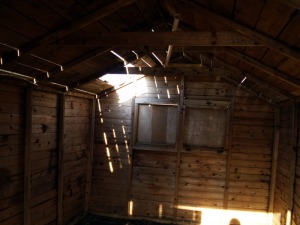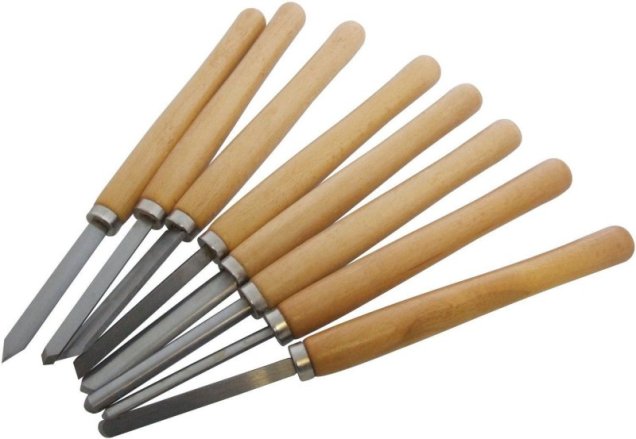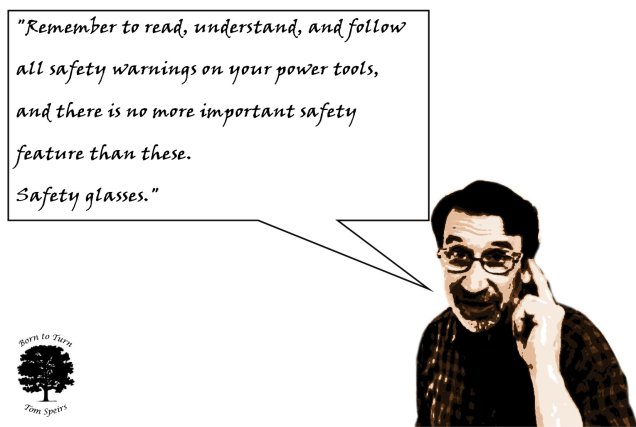We recently moved home, and now have a garden, brick-built garage, and plenty space for a new workshop. I could have used the garage, and built a small shed for storage, but for the first time in my life I have the space to build what I want, rather than make do.
The whole cost of building a shed is frightening. Even preparing the site is costly. I have made the decision to build a steel structure, rather than a wooden one – to eliminate ongoing maintenance issues.
The original plan was to prepare a concrete base. This however proved to be unfeasible due to access. The compromise was to build a deck from pressure treated timber supported on brick footings. Coating the deck every so often is still better than having to continually treat a wooden structure.
The building itself is a 20’x10′ garage made from prefabricated sections. According to the instructions, it is “easily assembled by two or more people.” I would advise to err on the side of “more.”
The entire build from lawn to wind and watertight building took 4 days.
I built the deck myself in around a day and a half.
The shed was assembled by my Son and I over 2 days, then I took a few hours on my own to hang the doors.
From this

To this

The door has been extensively strengthened, and I added a couple of pad bolts for extra security.
There are 2 huge doors in the left hand gable, which have been screwed closed and will be paneled over inside.
My Son has christened the building “The Aircraft Hangar” because of the size.
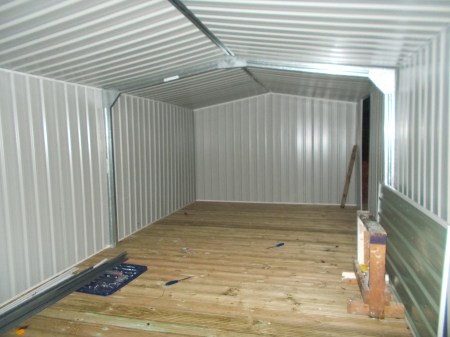
It certainly looks massive when empty. As time goes on, the inside will be filled with cabinets and bench space so it will look much smaller.
From a frugality perspective, this wasn’t cheap. Between the deck, the building, and framing for the inside (which will be done in stages) I will be around £1500GB out of pocket. I expect this building to last >20 years so that can be broken down into around £75GB per year over 20 years. I was paying £60GB per year for the site my container sits on, so in real terms, the shed works out at an extra £15GB per year over 20 years.
I can swallow that for having permanent power and being able to use the shed any time I want.
The benches and cabinetry will be mainly recycled. All of my tools and machinery will be transported here and installed, so no additional costs there. I think I will have enough room to be able to set up both lathes too.
Padding out the shell
My original plan was to line the inside walls with dry-wipe marker boards. They are constantly being replaced at work, so I thought getting hold of them would be easy. Not so however. They are skipped by contractors, so we don’t have easy access to them.
Next plan was pin boards. These are insualting material, covered in foam backed fabric. Just the job.
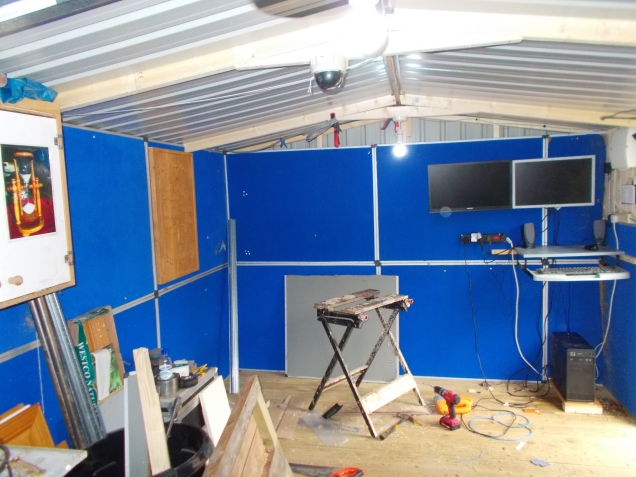
Next step is box in the computer to keep it dust free.

After that, I can start to think about bringing in my cabinets and benches from the container.
Baby steps.
